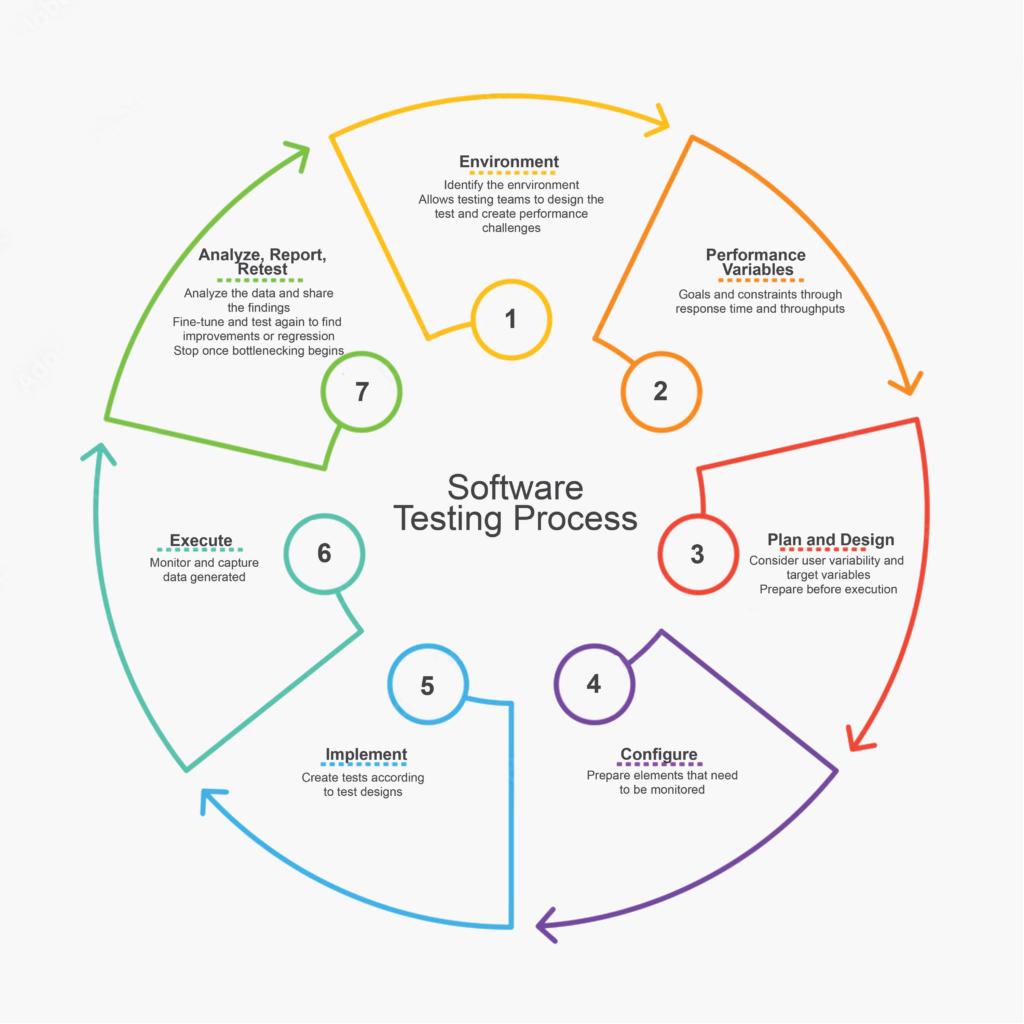Software Testing
Software testing is a continuous process that determines if the software product or application meets the requirements, does what it is supposed to do, and is free of any defects. This process finds errors, gaps, or anything that is missing compared to the software’s requirements, and testers can prevent similar snags in the future. Testing is important because any issues with the software can be found early and fixed before the software goes live. When testing is executed properly, the product that is delivered ensures dependability, security, and high performance. Which for a business lead to saving time, cost-effectiveness, and customer satisfaction. When there is a software failure or late delivery and defects, it can be damaging to a brand’s reputation, and the after-effects could be daunting.
Fixing a bug or defect in an already live software can be extremely costly or even dangerous, in 2016 software failures across the US cost the economy $1.1 trillion in assets. And on April 26, 1994, 264 people died because of a software bug that crashed China Airlines Airbus A300. There are many more examples like the ones listed, and they have a massive impact on an economy or even just a business. Hence, why testing from the very beginning is so important.
When it comes to testing there are over 150 types and the list keeps growing, so deciding which one to use could be confusing. Testing doesn’t just apply to large software or applications, even a simple small one can be subject to many tests. And having a test management plan to prioritize which testing will provide the most value should be in place. This will give you an idea of the time frame needed for testing and what can or should be done before launching the software. Testing always follows a common process, and basic parameters are put in place to measure the values when testing such as processor usage, memory usage, and bandwidth.

As mentioned before, there are many, many testing techniques, but luckily they can be broken into three groups, Functional Testing, Non-functional Testing, and Maintenance Testing. We will only list a few here:
Functional Testing – Focuses on the individual functions of the software
- Unit Testing – A basic approach to validate the unit-level components, that allows developers to know whether the individual code is working or not.
- Integration Testing – Test the connection between the unit modules and helps to figure out the bugs that hinder smooth interactions between the integrated units.
Non-Functional Testing – Designed to determine if the system is ready
- Performance Testing – How the software performs under different workloads, but this is not about finding bugs or defects. Just focuses on the performance.
- Stress Testing – How much strain the system can take before it fails, it measures the system performance outside of normal working parameters.
Maintenance Testing – How the system will continue to behave
- Regression Testing – Checks whether new features break or degrade the functionality of the system.
Of course, when testing, problems will arise, which is good because then that shows that is there a problem that needs to be fixed. But on the other hand, can be more time-consuming. Bottlenecking is a very common issue; this is when the flow of data is stopped because there isn’t enough capacity to handle the workload. Usually, one faulty section of code is the source. Poor scalability shows the software cannot handle the number of users. Speed is also another major issue because it is one of the most important attributes of an application. When speed and many others are an issue you lose your reputation as a business and lose customers.
In conclusion, testing isn’t just for completed projects, you should test early and test often. This will save you time, money, and headaches down the road.

